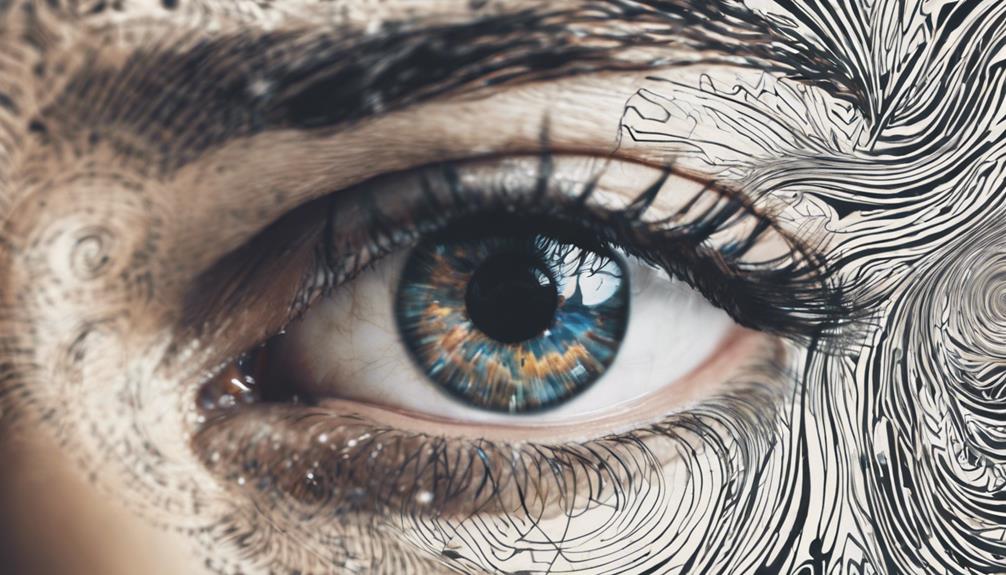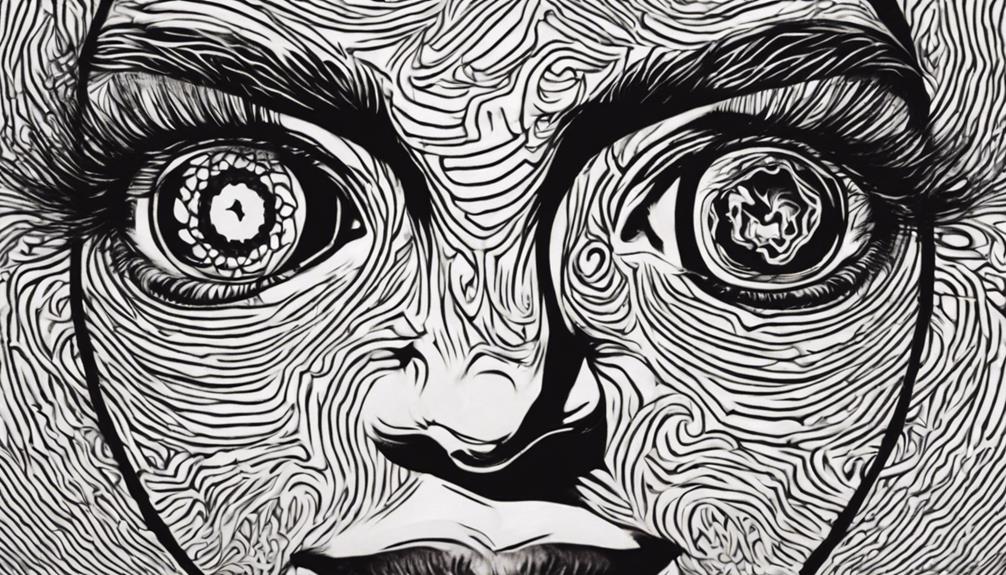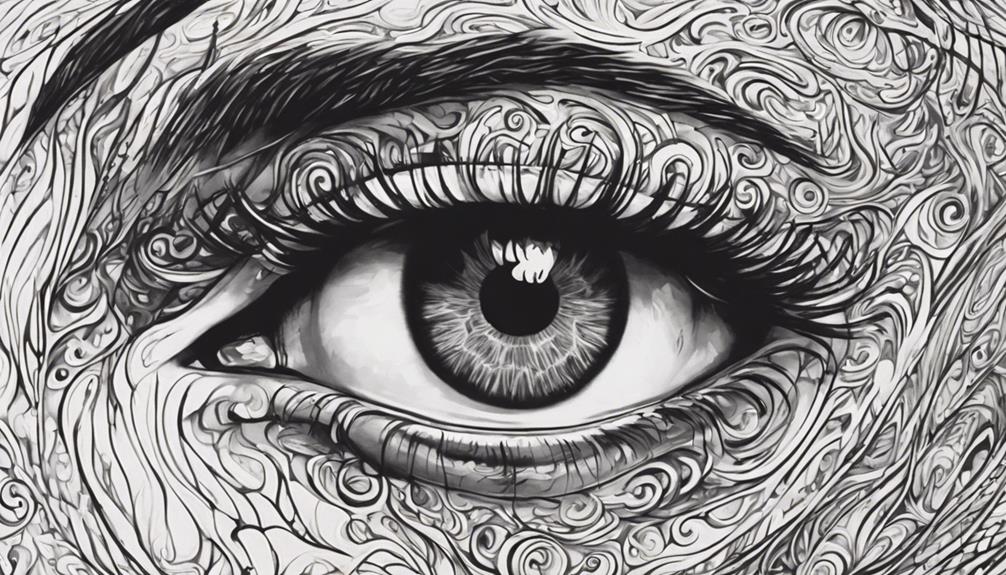Hypnosis eyes have a powerful impact on social interactions and subconscious responses. The science behind them involves changes in brain activity, leading to heightened suggestibility. The characteristics of the hypnotic gaze include steady eye contact and subtle movements that induce a trance-like state. This gaze fosters relaxation, trust, and deep connections. Techniques to develop hypnosis eyes include maintaining focus and conveying emotions through visual cues. Ethical considerations, like respecting boundaries and obtaining consent, are essential. Understanding the nuances of hypnosis eyes can enhance their effectiveness in influencing others.
The Science Behind Hypnosis Eyes

Underlying the phenomenon of Hypnosis Eyes is a complex interplay between psychological suggestibility and physiological responses. When individuals engage in hypnosis, their brain activity undergoes changes that can be observed through neuroimaging techniques.
Studies have shown that during hypnosis, there is decreased activity in the dorsal anterior cingulate cortex, which is associated with cognitive control, and increased connectivity between the dorsolateral prefrontal cortex and the default mode network, involved in self-referential thoughts. These alterations in brain activity may contribute to the heightened suggestibility experienced during hypnosis.
Moreover, eye movement plays an essential role in the hypnotic process. The hypnotic gaze is characterized by a fixed and steady focus, which can induce a trance-like state in the subject. This sustained eye contact can lead to alterations in consciousness and facilitate the induction of hypnosis.
Additionally, certain eye movements, such as rapid eye blinking or rolling, may be utilized by hypnotists to deepen the hypnotic state further. Understanding the intricate relationship between brain activity and eye movement is essential in comprehending the science behind the Hypnosis Eyes phenomenon.
Characteristics of Hypnotic Gaze
The hypnotic gaze, a fundamental aspect of the hypnotic process, encompasses specific characteristics that play a pivotal role in inducing a trance-like state in individuals.
One key characteristic is its hypnotic power, which refers to the ability of the gaze to capture and hold the attention of the person being hypnotized. This power stems from the intense focus and concentration exhibited by the hypnotist, drawing the individual into a state of heightened suggestibility.
Another defining trait of the hypnotic gaze is its mesmerizing quality. The mesmerizing gaze is characterized by a combination of steady eye contact, subtle movements, and a sense of depth that can captivate the individual's attention and foster a sense of relaxation.
This quality is essential in establishing rapport and building trust between the hypnotist and the subject, creating an environment conducive to the hypnotic process.
Impact on Social Interactions

Social interactions can be greatly influenced by the presence of an entrancing gaze. The impact of hypnosis eyes on social interactions is profound, primarily through nonverbal communication. Body language plays a pivotal role in conveying messages and establishing connections.
When someone possesses hypnotic eyes, their gaze can exude confidence and authority, subtly persuading others to listen and follow. Nonverbal cues such as prolonged eye contact and subtle facial expressions can enhance the influence of the entrancing gaze, making the individual appear more charismatic and engaging in social settings.
Moreover, the hypnotic gaze can affect the dynamics of social interactions by instilling a sense of trust and rapport. People tend to be drawn to individuals with enchanting eyes, leading to more engaging conversations and a deeper level of connection. Through the power of persuasion embedded in the hypnotic gaze, individuals can effectively navigate social situations and leave a lasting impression on others.
Techniques to Develop Hypnosis Eyes
Exploring techniques to cultivate and enhance the hypnotic gaze involves mastering specific visual and behavioral practices. To develop hypnotic eyes, individuals can engage in practice exercises designed to improve their ability to maintain steady eye contact and convey a sense of focus and intensity. One such exercise involves practicing maintaining eye contact with a mirror for extended periods to build comfort and confidence in holding someone's gaze.
In addition to practice exercises, paying attention to visual cues is essential in developing hypnotic eyes. This includes being mindful of the intensity and duration of eye contact, the softness or sharpness of focus, and the ability to convey emotions through the eyes.
Practicing different ways of using visual cues, such as subtly changing the intensity of the gaze or adjusting the angle of the head to convey interest or engagement, can help in mastering the hypnotic gaze.
Ethical Considerations and Boundaries

Considerations of ethical principles and establishing clear boundaries are fundamental aspects of practicing hypnosis, particularly when it comes to the use of hypnotic techniques involving eye contact. Professional boundaries must be carefully maintained to guarantee the well-being and autonomy of the individual being hypnotized. Ethical dilemmas may arise when the power dynamics between the hypnotist and the subject are not carefully managed. It is pivotal for the hypnotist to prioritize the client's best interests and avoid exploiting the trust placed in them.
Consent issues are paramount in hypnosis, especially concerning techniques that involve direct eye contact. Prior informed consent regarding the use of eye contact in hypnosis sessions is vital to respecting the individual's autonomy and right to make decisions about their own mental state. The hypnotist must be transparent about the techniques they plan to use and ensure that the client understands and agrees to them. Failing to obtain proper consent can lead to breaches in trust and ethical misconduct.
Conclusion
To wrap up, the development of hypnosis eyes involves understanding the science behind the hypnotic gaze. Its characteristics, impact on social interactions, and techniques to cultivate this skill are essential aspects to consider. It is essential to take into account ethical boundaries when utilizing hypnosis eyes in various settings.
How can individuals harness the power of hypnosis eyes ethically and effectively in their interactions with others?
Dr. John Renoldson is a distinguished professor of Clinical Research Hypnotherapy He holds a PhD in Clinical Psychology and specializes in hypnotherapy and scientific research to enhance therapeutic outcomes. Dr. Renoldson has authored numerous peer-reviewed articles on the efficacy of hypnosis in treating conditions.




